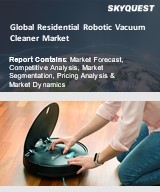
Report ID: SQMIG20N2031

Report ID:
SQMIG20N2031 |
Region:
Global |
Published Date: May, 2024
Pages:
204
|
Tables:
88 |
Figures:
72
Drivers
Rising Demand for Smart Home Solutions:
Changing Lifestyles and Urbanization:
Technological Advancements:
Increasing Disposable Income:
Restraints
High Initial Cost:
Limited Battery Life and Runtime:
Complexity in Handling Obstacles:
Limited Cleaning Performance on Certain Surfaces:
Our industry expert will work with you to provide you with customized data in a short amount of time.
REQUEST FREE CUSTOMIZATIONWant to customize this report? This report can be personalized according to your needs. Our analysts and industry experts will work directly with you to understand your requirements and provide you with customized data in a short amount of time. We offer $1000 worth of FREE customization at the time of purchase.

Report ID: SQMIG20N2031